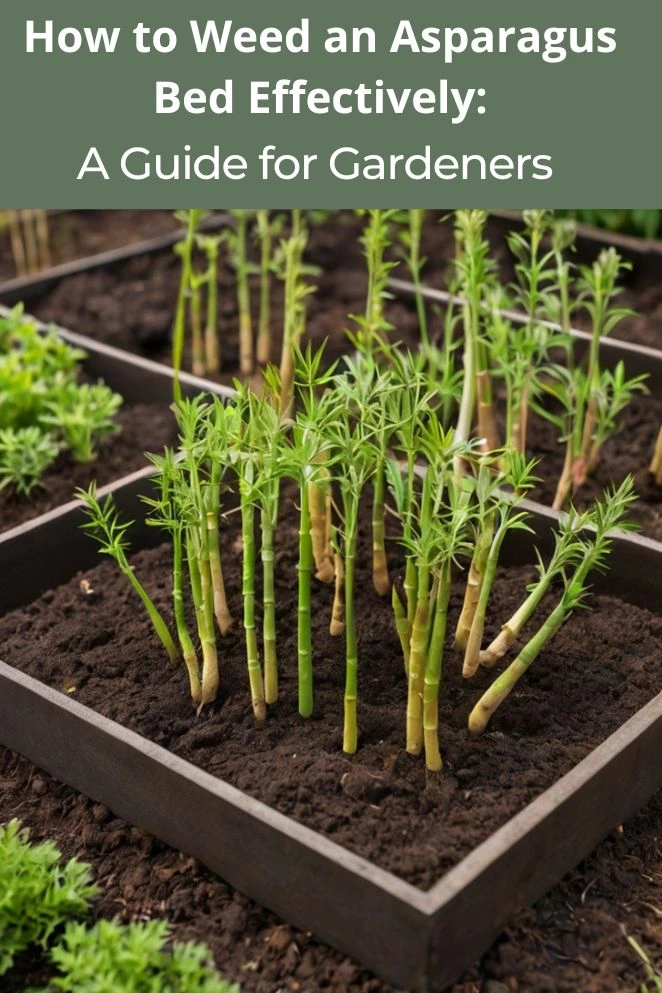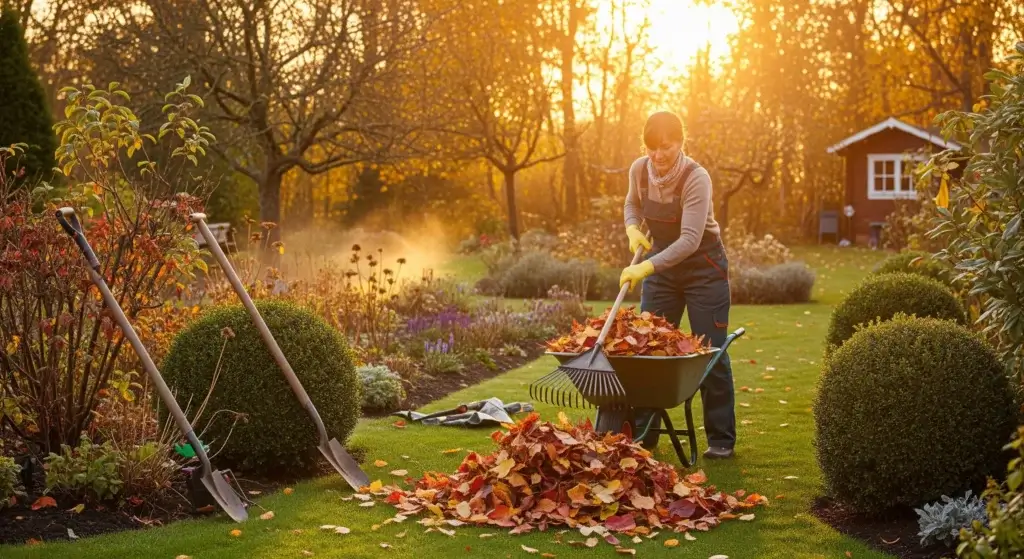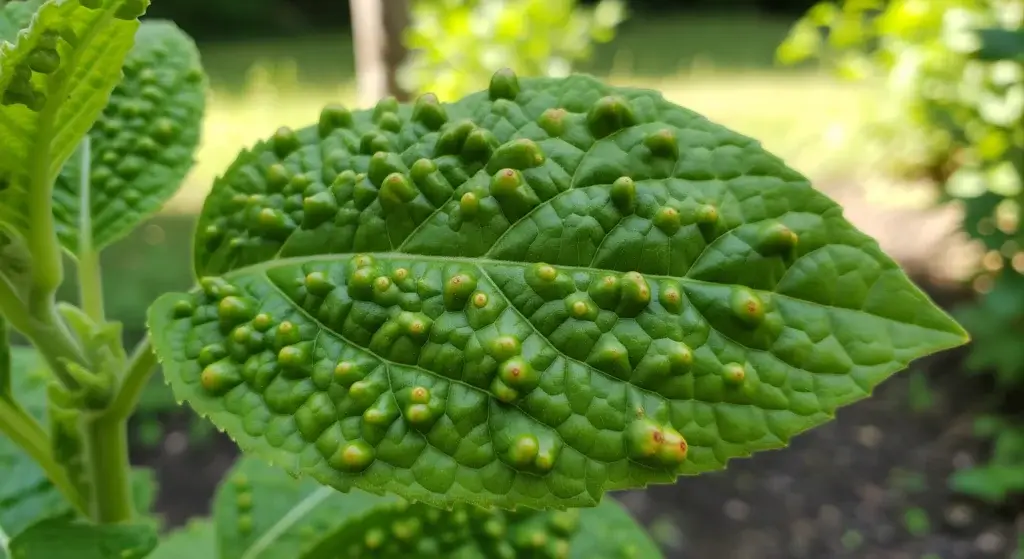
Asparagus beds are a long game—you set ‘em up once, take care of them, and they’ll keep giving you those sweet, tender spears for decades.
But here’s the catch: weeds are the enemy.
They steal your asparagus’s food, water, and sunlight like freeloaders at an all-you-can-eat buffet, and over time they’ll straight-up weaken your plants.
Why Weed Control is Critical for Asparagus Success
Asparagus isn’t like your basic one-season veggies.
It’s got this whole long-game vibe—deep roots, delicate ferns, and a “touch me wrong and I’ll sulk for a year” personality.
That’s why weeds aren’t just a nuisance, they’re a full-on threat. Here’s the tea:
- Competition for resources: Weeds are basically energy vampires. They steal water, nutrients, and sunlight your asparagus needs to charge up its crowns.
- Harbor for pests: Asparagus beetles and aphids? They’ll move in like it’s rent-free student housing and wreck your crop from the inside out.
- Reduced air circulation: Weeds trap moisture like a bad raincoat, keeping your asparagus ferns damp way too long. That’s basically a fungal disease party invite.
- Harvest interference: Ever tried picking spears in a jungle? You’ll miss some, break others, and the quality tanks. Clean beds = smooth harvests. Weedy beds = chaos.
Understanding Your Asparagus Bed’s Unique Needs
Before you go all weed-warrior on your asparagus patch, you gotta know this: asparagus isn’t a one-size-fits-all situation.
How you treat it depends on its age and how “grown-up” it is.
Newly planted beds (Years 1–2)
Baby asparagus is fragile.
Its roots are still finding their way, and weeds will bully them hard if you’re not careful.
This is the “protect at all costs” phase—think soft touches only.
Gentle hand weeding and cozy layers of organic mulch work way better than ripping through with aggressive tools that could slice up those shallow crowns.
Established beds (Years 3+)
Now your asparagus is a seasoned veteran with deep, beefy roots that can throw down against weeds.
But here’s the twist—those crowns sit deep, so you can’t just dig around all willy-nilly.
You’ll need precision timing and careful technique to avoid wrecking years of growth. This is maintenance mode, not demolition derby.
The Best Times to Weed Your Asparagus Bed
Weeding isn’t just about doing it—it’s about when you do it.
Hit the wrong timing, and you’re either wasting energy or risking your asparagus.
Here’s the game plan:
Early spring (before spear emergence)
This is your prime time.
The soil’s waking up, weeds are showing their ugly faces, and your asparagus is still snoozing underground.
Knock out those weeds now and, if you’re using pre-emergent treatments, this is when you drop them.
Think of it as clearing the battlefield before your asparagus soldiers march out.
Immediately after final harvest
Once you’ve picked your last spear (usually late June or early July), it’s go time again.
You want the bed clean before the ferns grow wild.
If you skip this, weeds will party all summer and your asparagus will lose valuable energy.
Late fall/early winter
When the ferns are done and crispy, yank ‘em out along with any weeds still hanging around.
This is your “tuck the bed in for winter” moment—clean, neat, and ready to hit the ground running next spring.
Mechanical Weed Control Methods
Hand weeding
Sometimes old-school just works best.
Hand weeding is still the GOAT for asparagus beds—especially right around the plants where tools or machines would just wreck stuff.
Technique:
Grab a hand weeder or a narrow trowel and go for the roots—don’t just rip the tops or they’ll be back in a week.
Wait until the soil is a little moist (but not soggy) so weeds slide out easier, roots and all.
Best timing:
Do it whenever weeds pop up during the season, but never mess with the soil when it’s soaking wet or touch the plants when their ferns are wet—that’s how you spread diseases without even knowing it.
- Pros: Total control, no chemicals, earth-friendly.
- Cons: Yeah… it’s slow. Your back might hate you after a big bed.
Shallow cultivation
If you want to level up from hand weeding, shallow cultivation is your move.
It keeps weeds down without killing your asparagus.
Technique:
Use a stirrup hoe or wheel hoe and just scratch the top 1–2 inches of soil.
Always work parallel to the rows and keep at least 6 inches away from the plant centers—those crowns are precious.
Best timing:
Hit weeds when they’re baby-sized (2–4 leaf stage) so they don’t stand a chance.
Avoid this when spears are poking up or ferns are forming—you’ll risk snapping them.
Important considerations:
Never go deeper than 2 inches.
This isn’t trench-digging—it’s more like skin exfoliation for the soil.
And once the ferns are up, stop. You’re in “look but don’t touch” mode.
Organic Mulching Strategies
Mulch is like a weed-fighting blanket for your asparagus bed—simple, effective, and eco-friendly.
But it’s not just “throw stuff on the ground and walk away.”
You’ve gotta play it smart so you don’t accidentally invite pests to crash the party.
Recommended mulch materials
- Straw or Hay: Go with 3–4 inches of clean, seed-free straw. Wheat straw is a win—it’s usually weed-free and breaks down nice and slow.
- Wood Chips: Aged hardwood chips? Chef’s kiss. They block weeds and feed the soil as they break down. Just skip the fresh stuff—it hogs nitrogen like a greedy roommate.
- Grass Clippings: Only use clippings from chemical-free lawns. Keep it thin (1–2 inches) or you’ll end up with a smelly, slimy mess.
- Compost: Well-aged compost pulls double duty—blocks weeds and feeds your plants. Go for 2–3 inches around the asparagus.
Mulching guidelines
- Application Timing: Wait until late spring—soil’s gotta be warm before you tuck it in.
- Thickness: Keep it at 3–4 inches for prime weed-blocking power.
- Crown Clearance: Give your asparagus crowns a 6-inch “no mulch zone” so you don’t invite pests or rot.
- Seasonal Management: Pull mulch back in early spring to let the soil warm up, then lay it down again once the spears pop.
Important mulching considerations
Fun fact: recent studies say mulch right in the asparagus rows can actually increase beetle and aphid problems.
So maybe keep the mulch in the pathways, not hugging your plants.
Around the asparagus itself, use other weed-busting tactics so you get the benefits without the bug invasion.
Pre-Emergent Herbicide Options
Think of pre-emergent herbicides as a “weed birth control.”
They don’t kill weeds that are already living rent-free in your bed—they stop new ones from ever showing up.
Timing and technique are everything here.
Organic pre-emergent options
- Corn Gluten Meal: This is the organic MVP. Spread it at 20 pounds per 1,000 square feet in early spring before weeds even think about sprouting.
- Benefits: 100% organic, boosts soil health.
- Limitations: Only works on seeds, so if you’ve already got weeds standing, this stuff won’t touch them.
Commercial pre-emergent herbicides
Trifluralin-based Products: These are home-garden-friendly and target annual grasses plus some broadleaf weeds.
Application guidelines:
- Hit the bed in early spring before asparagus spears pop up.
- Follow the label like it’s sacred text—wrong amounts or timing will backfire.
- Water it in after applying.
- Reapply every 3–4 months if needed, or as the label says.
Post-Emergent Weed Control
Sometimes weeds slip through all your defenses and start acting like they own the place.
When they’re too stubborn for pulling or cultivation, you might have to bring out the big guns—selective herbicides.
But this is serious business, so precision matters.
Selective herbicide applications
Glyphosate (Roundup): This is the nuclear option for spot-treating nasty perennial weeds.
It works, but it’s also unforgiving—hit your asparagus by accident, and it’s game over.
Application guidelines
- Only use in early spring before spears show up, or right after your last harvest.
- Apply only to the target weed using a foam brush or with a shield to block your asparagus.
- Never let it touch spears or ferns—not even a little bit.
- Read and follow the label like your life depends on it.
Safety considerations: Suit up—gloves, long sleeves, eye protection. And pick a calm, wind-free day unless you want chemical drift turning your asparagus into collateral damage.
Common Weeding Mistakes to Avoid
Weeding seems simple—yank plants you don’t want—but asparagus will humble you if you get sloppy.
Here’s how people mess it up and accidentally sabotage their own crop.
Over- cultivation
Going too deep or too often with tools is like giving your asparagus an unplanned root amputation.
Keep cultivation shallow and only early in the season.
This isn’t Minecraft—you don’t need to mine for diamonds under there.
Inappropriate mulching
Pile mulch right on top of the crowns or use dense, suffocating materials and you’ve basically made a pest Airbnb and a fungus spa.
Leave a gap around the crowns and pick materials that breathe.
Poor timing
Weeding when your asparagus is stressed or in the middle of a crucial growth sprint? You’re just kicking it when it’s down.
Learn its schedule and work around it, not against it.
Inadequate weed identification
Not all weeds are the same—some are annuals, some are perennials, and they each need different takedowns.
If you don’t know what you’re dealing with, you’re fighting blind. Learn your local weed villains so you can take them out with precision.
Troubleshooting Common Problems
Even with your A-game, weeds can still pull a comeback.
Here’s how to deal when they refuse to quit.
Persistent perennial weeds
Stuff like dandelions and thistles are basically weed cockroaches—deep roots, endless stamina.
Your best bet? Dig ‘em out as much as you can, then hit the survivors with a super-targeted herbicide. No mercy.
Annual weed explosions
If annual weeds blow up like it’s a music festival in your asparagus bed, your mission is simple: stop them from going to seed.
Cultivate or mow them before they drop their next generation.
Think of it as cutting off their family tree before it starts.
Grass invasion
Grassy weeds are a different beast from broadleaf weeds—they need their own takedown plan.
Go for selective herbicides made for grass or pull them out with careful cultivation so you don’t nuke your asparagus in the process.
Conclusion
Keeping your asparagus bed weed-free isn’t about random hacks—it’s a full strategy.
Mix mechanical, organic, and (when needed) chemical control, and do it at the right times.
Skip the “once-a-year panic cleanup” routine; steady, regular attention wins every time.
Do it right, and your asparagus will keep throwing you tender spears for decades.
It’s more than just weed control—it’s future-proofing your garden for bigger harvests, easier picking, and a bed that lasts way longer than the lazy gardener’s.



